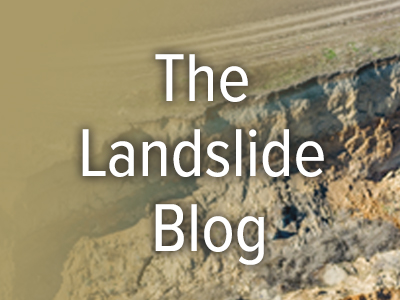The Landslide Blog is written by Dave Petley, who is widely recognized as a world leader in the study and management of landslides.
Some of the most extraordinary landslides have occurred on and around the Tibetan Plateau. The active tectonics and steep terrain leads to a high level of mass movements, which are then preserved in the landscape by the climatic conditions and the comparative lack of vegetation.
An interesting paper had just been published in the journal Engineering Geology (Qi et al. 2025), which describes very large landslides in this area. It is fascinating, suggesting that the landslides are directly related to the local, complex, tectonics.
The paper includes a description of several large landslides, all of which are intriguing. This is a landslide-dominated landscape; there is a lifetime of work to study these failures. But one really caught my eye – this is an earthflow alongside the Suoertou landslide, of which I was previously unaware.
The earthflow in question sits alongside the Suoertou landslide, and is located at [33.7925, 104.3278]. There is wonderful imagery of it on Google Earth. Take a look – you won’t regret it. Qi et al. (2025) describe this as an earthflow, which is entirely reasonable. This is a Google Earth perspective view of the landslide:-

The Suoertou landslide is on the right side of this image, with another earthflow to the left, which I will focus on here.
Clearly, the topographic setting of this landslide, with steep rock ridges on either flank (is this an eroded out anticline?), enhances the perspective. But this is a large (c. 2.5 km long), active failure with a host of interesting features.
Starting at the crown of the landslide, there is a very clearly developed rear scarp and a beautifully exposed shear surface:-

The patterns of movement here are complex (this would be a great site for InSAR analysis, using the boulders as permanent scatterers). The boulders themselves are interesting – these have come from the steep cliffs on the left side (in the image) of the landslide. To the left side there is an older earthflow extending further up the slope, although this looks to be less active now.
Further downslope, there is a second, well-developed rear scarp:-

This marks the transition into a much more active area of the landslide. Downslope from this point, the ground is highly disrupted and agriculture is proving to be essentially impossible. It is likely that there is much higher rates of movement in this area. The archive Google Earth imagery shows the rear scarp developing substantially with time in this part of the landslide.
Further down the slope, this active area forms a beautiful earthflow lobe, seen here to the left of the main flow:-

The main part of the earthflow continues to the river, best captured on the Google Earth imagery from 2014:-

Qi et al. (2025) note that at the toe the river channel is being compressed by the landslide debris by the Suoertou landslide – this is also the case here. Note the small landslides feeding into the main earthflow from the flanks – this is a complex landform.
This landslide is a fantastic example of a large, complex earthflow in an active mountain landscape. Many thanks to Qi et al. (2025) – the authors are all from the School of Earth Sciences at Lanzhou University – for such an interesting paper.
Reference
Qi, T. et al. 2025. Ancient very large and giant landslides on the eastern margin of the Qinghai–Tibet Plateau, China. Engineering Geology, 346, 107889.
https://doi.org/10.1016/j.enggeo.2024.107889.


